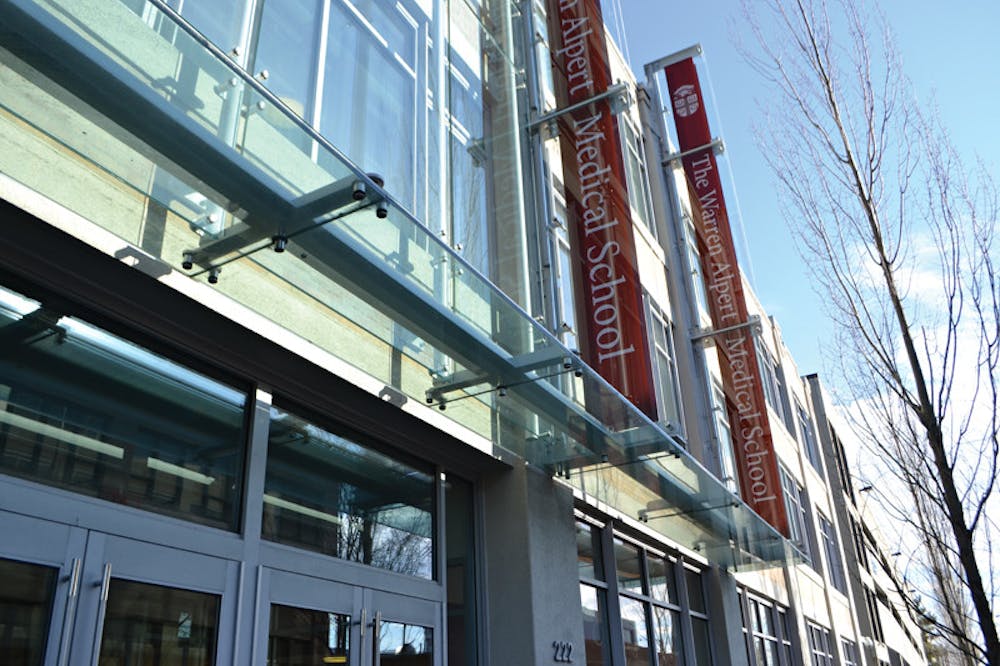Since the Warren Alpert Medical School moved the majority of its curriculum to a remote format beginning in fall 2020 to adhere to COVID-19 guidelines, lectures have been given live over Zoom or pre-recorded. The components of the curriculum that do meet in person, such as the first-year anatomy course, have been adjusted to meet social distancing requirements.
Because of the pandemic, the anatomy course no longer includes a year-long cadaver dissection, which had long been considered an integral part of the Med School experience, said Amy Chew, lecturer in ecology and evolutionary biology and one of the lecturers for the anatomy course.
Traditionally, groups of five to six students would spend about three hours a week dissecting a cadaver themselves, but this required many students to be in a confined lab space for a prolonged period of time, Chew said. Given the Centers for Disease Control and Prevention’s recommendations against indoor gatherings, this aspect of the course needed to evolve with the onset of COVID-19.
Med School staff now perform the dissections beforehand for the students to study later — a method known as prosection, Chew said. Students are required to spend one hour a week in the lab, but during this time, only two students may be present together, which allows for enforcement of social distancing guidelines.
While the switch to prosection means that students miss out on the dissection experience, there are benefits to this teaching method, Chew said. “The one major advantage is that students aren’t so tied up in lab,” she said, adding that the new method gives medical students more time to study the content they learn during the anatomy lab outside of class.
Other medical schools had already stopped using dissection pre-pandemic, Associate Dean for Medical Education Paul George ‘01 MD‘05 said. By switching to prosection format, “we’re actually more in line with what other medical schools are doing at this point,” he added.
Students who spoke with The Herald voiced mixed feelings about the Med School’s switch to prosection.
“With (COVID-19), I’m grateful we get to go” to the anatomy lab, Wendy Gonzalez ‘19 MD’24 said. “But I do feel like we missed out. I feel like we would remember so much more if we actually got to ... find everything ourselves.” She believes that the more hands-on aspects of dissection would have helped her as a visual and tactile learner and better prepared her for a career in surgery.
But understanding the need for adjustment during the pandemic, Gonzalez said she thinks learning using prosection “is still helpful.”
Other first-year medical students prefer the prosection method.
“I’m somebody who is definitely not going to go into surgery, so it’s maybe less heartbreaking for me than for somebody who’s really into anatomy and the body,” said Jessica Moore MD’24. Moore says she has been able to learn effectively using prosection because of her independent learning style. “For me, it’s been a better experience,” she added.
Navya Baranwal ’20 MD’24 said, “At first I was a little apprehensive: What is my medical education going to be like? But overall I feel like it's still been very meaningful and educational, and it’s been a nice balance of ensuring medical students’ safety but also (ensuring) that we have a good education.”
Despite the change in the course structure, student engagement and performance has remained steady; course ratings and exam scores have been about the same as they were in past years, according to George.
In years prior, performance in the anatomy course was partly evaluated through a practical exam. But that component was eliminated in the fall, which made the efficacy of the course harder to judge, Chew said. It was replaced with 20 additional multiple choice questions on the lab material in the written exams.
“It is challenging for us to try to figure out what (students) have been able to absorb” from the lab without the practical exam, Chew said. “I think we won’t really know until these students take their step exams next year,” she added.
The COVID-19 anatomy experience raises questions about the future of the Med School’s anatomy course after pandemic restrictions are lifted.
“I think we’ll go back to a more normal overall Med School structure at some point in the not-so-distant future,” George said, but in regards to anatomy, “it’s hard to predict” when that will occur.
But “there’s certainly lessons we can learn from (COVID-19) about the curriculum and how to make it more efficient,” George added.

ADVERTISEMENT
More




